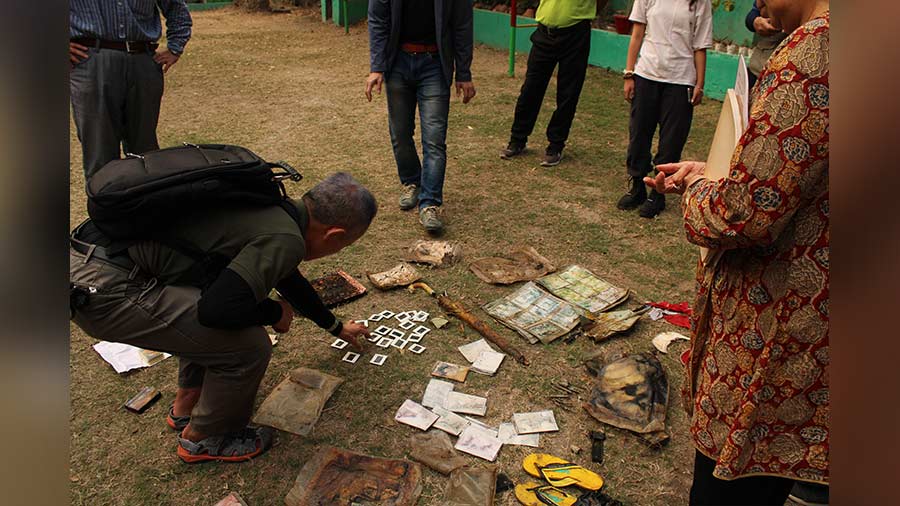If looking for the premises of the Indo-Japanese Welfare and Cultural Association (IJWCA), you would have to turn into a lane that faces the Ballygunge Maidan Camp. The association’s offices, you might soon be told, have a storied history. Not only have several eager students been lining up here for Japanese language classes over the years, the IJWCA building used to once be a yet more holistic educational institution. Until 1996, this was the campus of the ‘Japanese School in Calcutta’, Kolkata’s only all-Japanese school.
In the IJWCA garden, one notices that a patch of land has recently been dug and filled. The date on the plaque here reads “1996. 3. 16”. One presumes this was the day the school shut down, but even more interesting is the text you find written below in Japanese: “Time Capsule. Calcutta. We are leaving this place, but we will return to dig up the capsule”. This reads like a message in a bottle because it is precisely that — a loud holler from the past.
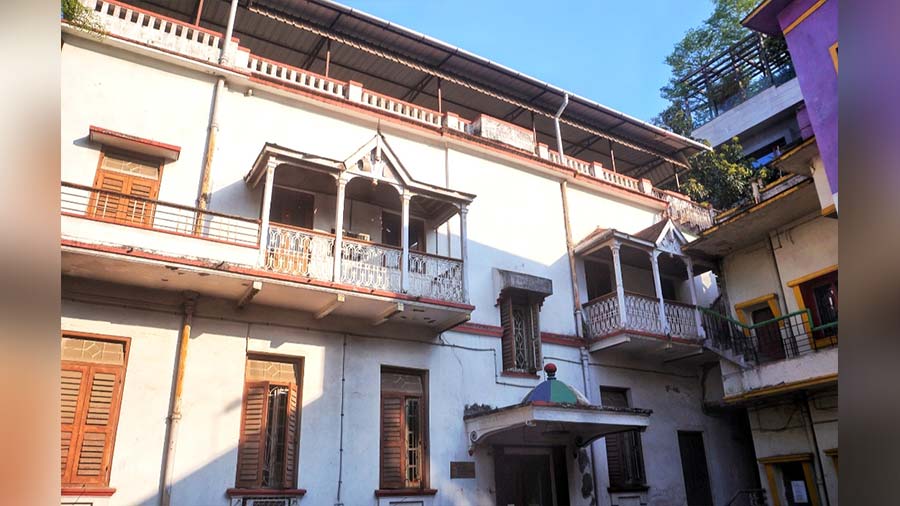
The building on Ballygunge Circular Road Soumyajit Dey
‘A piece of Japan’
Sumangali Bhaduri used to work at the Japanese School as an English teacher and administrator from 1993 to March 1996. On the last day of school, she tells us, “All those who were directly associated with the school — staff and students — were requested to put something inside the time capsule. I remember I had written a memo in Japanese”. On January 14 this year, the day when the capsule was finally unearthed after 27 years, Bhaduri, sadly, couldn’t find the note she had written. “Most people had jotted down their memories and messages with normal ball point pens or ink. None of those papers remain,” she says. “Surprisingly, only the ones with calligraphy ink have survived.”

Sumangali Bhaduri, who used to work at the Japanese School as an English teacher and administrator, examines the remains of the capsule Courtesy: Sabarno Sinha
Shiomi Komiyama lived in Kolkata from 1994 to 1997. Eight when she arrived and 11 when she left, Komiyama tells us she joined the Japanese School in 1994 and that she was a student there until the school shut down in 1996. Though she remembers having contributed to the time capsule, she doesn’t remember what exactly she had put in it. In an email she sent us from Tokyo, Komiyama says, “I might have put in a small diary or a notebook.”
Sabarno Sinha, programmes manager of The Japan Curry, a youth organisation, was present when the IJWCA’s garden was dug up. He says that in 1996, all the contents of the time capsule had been stuffed inside a plastic drum: “When we were digging, the lid of the drum couldn’t be found. The lid, we later saw, had eroded and fallen inside. In the mud, I could see shards of glass and broken kites. There were some things that were sealed in packets — photo albums, letters, trump cards, umbrellas, toys, shoes and caps. Thankfully, we could read the writing of some students because their notes had all been sealed.” Shot by Rohan Bhattacharya, The Japan Curry documented the events in a video that can be viewed here.
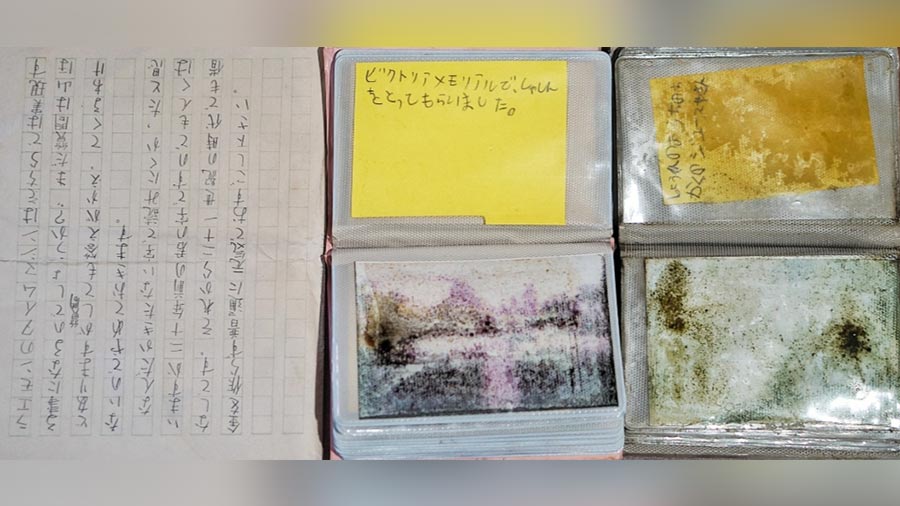
Notes, photographs and letters that were recovered Photo: Soumyajit Dey; Courtesy: Sabarno Sinha
Since the damage was severe, most objects in the time capsule had rotted and were eventually discarded, but some memories were brought back and preserved. Bhaduri, for instance, took home with her some student worksheets and a report envelope. Sinha, on the other hand, came back with some letters and photo albums. He loosely translated for us a letter a child had written in 1996 — “To the people of 2016. It’s late, but Grandpa, I hope you are well. This is a letter from me to you from 20 years in the past.” Though most photographs in the albums proved impossible to save, their captions were still visible: “Sitting in a chair at Taj Hotel”, said one. “Sitting in a chair at the gymnasium,” said another. For Sinha, a final-year undergraduate English student at Jadavpur University, “There is a piece of Japan here. These objects may not be relics, but they are also not things you can throw away that easily.”
Memories that don’t fade
Sinha had reason to be in thrall. To him, the fact that he was seeing something being unearthed from a time before he was born, seemed unbelievable. “For the Japanese, storing a time capsule is a ritual, but to see one in a place so far away from Japan was a wonderful feeling. I wouldn’t say those students belong to a forgotten generation, but we don’t stop to remember them on an everyday basis either.” Sumangali Bhaduri, for her part, felt so overwhelmed, she broke into goosebumps: “I had to volunteer to take back something.”

The school in its heyday, from Sumangali Bhaduri’s photo album Photo: Soumyajit Dey; Courtesy: Sumangali Bhaduri
As Bhaduri now flips through some of her old albums, she points to pictures of the school’s classrooms and music hall. One sees photographs of children gathered in the playground and festivals being celebrated together. Bhaduri remembers the students were “a very happy group”. She adds, “The school was meant for Japanese nationals who were staying in Kolkata. Most children’s fathers were working in Japanese corporate houses like Bank of Tokyo, Mitsui, Mitsubishi, and so on. Some of them went to international schools, too. Only the parents who wanted their children to be educated in accordance to Japan’s school system would admit their children to this school.” When Bhaduri had joined the school in 1993, it had “about seven children”, and when it closed down, “there were four”.
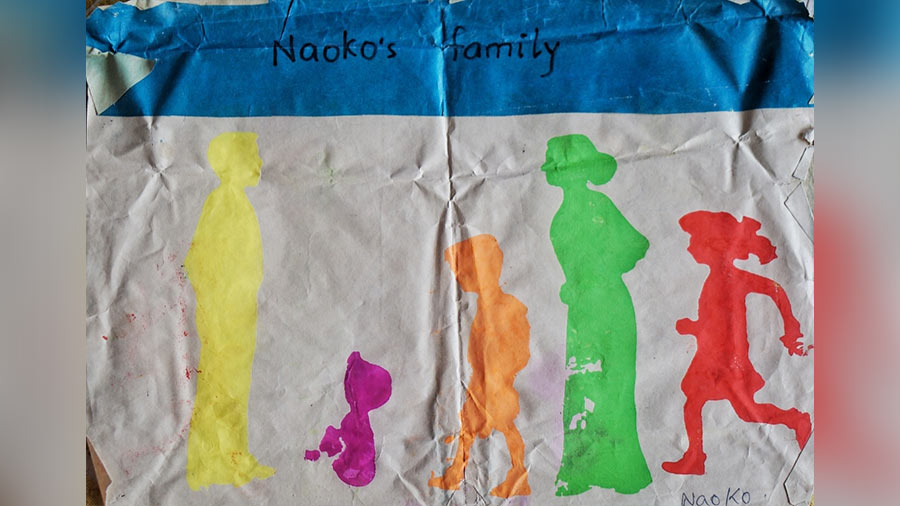
A craft worksheet by former student Naoko emerged from the time capsule. This is one of the better preserved contents that was taken in by Bhaduri Photo: Soumyajit Dey; Courtesy: Sumangali Bhaduri
Bhaduri can even recall the school’s timings: 8:30am to 3pm. “The official medium of instruction was Japanese,” she says. “The school was run by Japan’s Ministry of Education, and the class gradient was from elementary to Class X. I also invigilated in their Class X exams. All the student’s textbooks and stationery were provided for by Japan.”
Even though she was only a student here for a year and a half, Shiomi Komiyama, too, has vivid memories of the Japanese School. She, for instance, loved the music classes here: “I remember learning handbells and tabla during music class. It was so much fun, especially when we practised and performed in front of adults. I do not have my tabla anymore, but I remember the beats (ka te te ge ge te te…). I can still beat the rhythm with my hands.” Komiyama even remembers milking a cow that was once brought to the school’s campus.
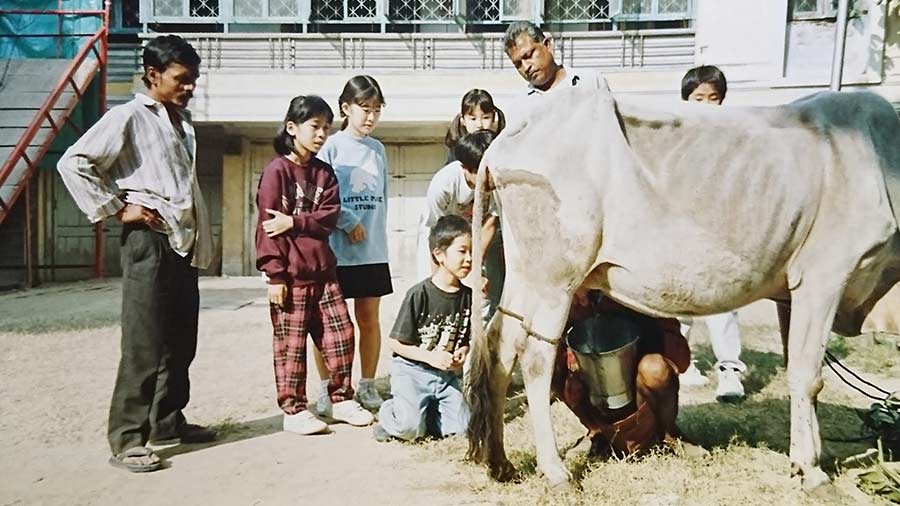
Shiomi Komiyama (second from left) watching a cow being milked on the school’s campus, in 1994 Courtesy: Shiomi Komiyama
Today, Komiyama lives in Tokyo and works in an audit firm as a certified public accountant. Though her eight-month-old baby keeps her busy, Komiyama still takes out the time to recall her several Kolkata memories. “In 1997, I left Calcutta because my father’s work took us to Singapore,” she says. “Unfortunately, I have not had the chance to return since, but I remember snippets of the city, thanks to all the videos and pictures my parents took.”
Turning time’s wheels
Kolkata, today, has a small but vibrant Japanese community, and the time capsule had, until last year, been a legend for its members. Many had heard of its existence, but it was, finally, Kolkata’s Japan Club that went ahead and took the initiative to reopen the time capsule. The Japan Club comprises approximately 40-50 members of the community. They meet often, and from time to time, they even collaborate with other Japanese societies in the city for events.
Hitoshi Kawano, chief operating officer, Primetals Technologies India, is also the event and welfare officer at the Japan Club. He told My Kolkata, “The original students of the school were supposed to dig up the capsule two or three years ago, but all the kids who went here had gone back to Japan. Also, COVID-19 put a spanner in the works. We thought January was a good time for us to dig out the time capsule. Summer still had a while to hit us.”
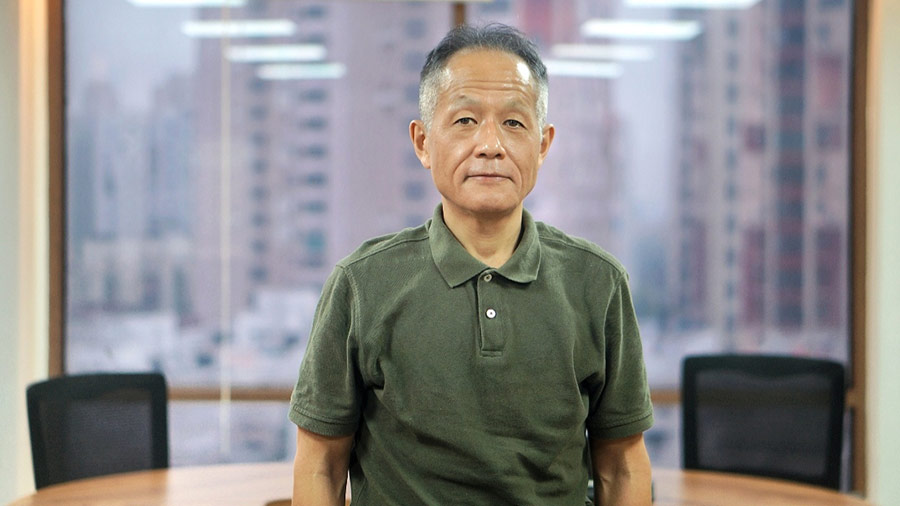
‘The original students of the school were supposed to dig up the capsule two or three years ago… but COVID-19 put a spanner in the works,’ said Hitoshi Kawano, the event and welfare officer of the Japan Club Soumyajit Dey
After receiving a little help from other Japanese organisations, the Japan Club took around a month to organise the hour-long dig. “Many people went there that day. They were all waiting for the moment when they would see the voices of the children,” says Kawano. Though he admits that he was at first a touch disappointed to see how much the capsule had decayed, he says he was later impressed by the condition of all the objects that had survived the onslaught of time. “It was like I had some communication with those kids from 27 years ago, a time when I was a young businessman. Time flies! The unearthing might have been very short and fast, but under the ground, time passes very slowly. It really is a time capsule.”
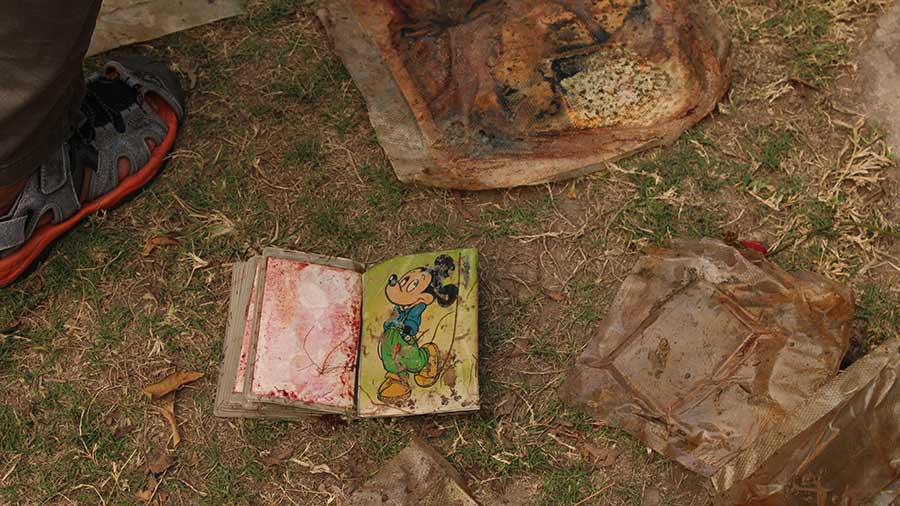
A decayed notebook Courtesy: Sabarno Sinha
Kawano now wants to share this memory with former students of the school through the Japan Club website. One can only hope that such initiatives will further nurture and strengthen an already significant decades-long Indo-Japanese relationship. The unearthing of this time capsule sends a clear message to a handful of Kolkata’s former residents: The city rarely ever forgets those who once lived here, and it will certainly never forget you!
